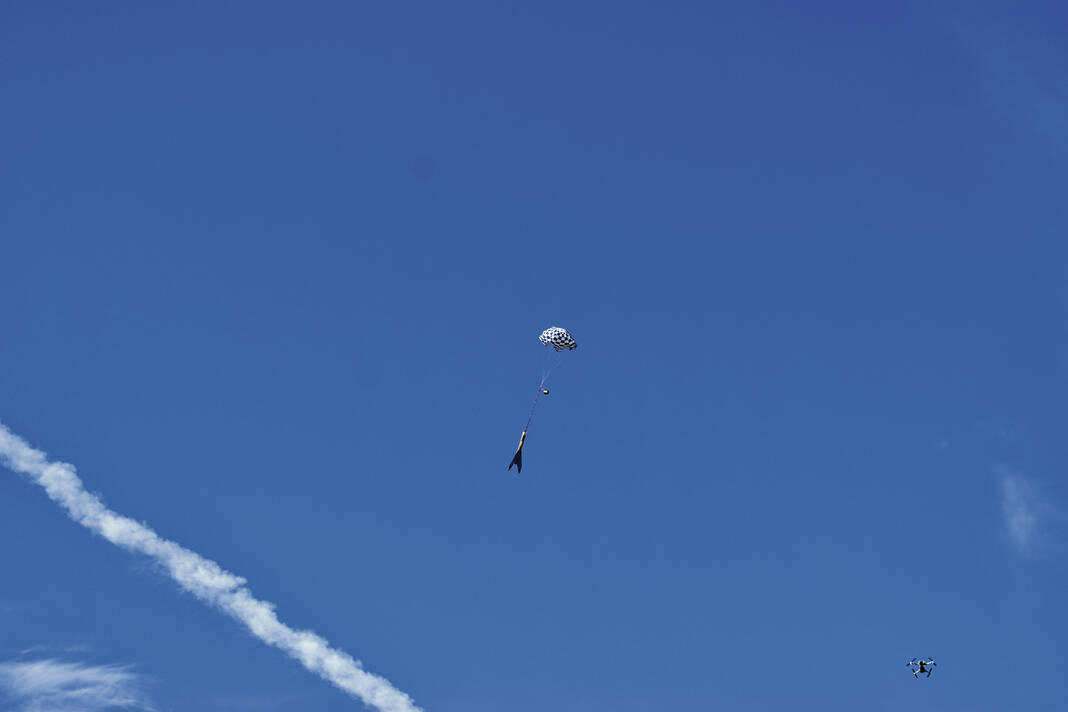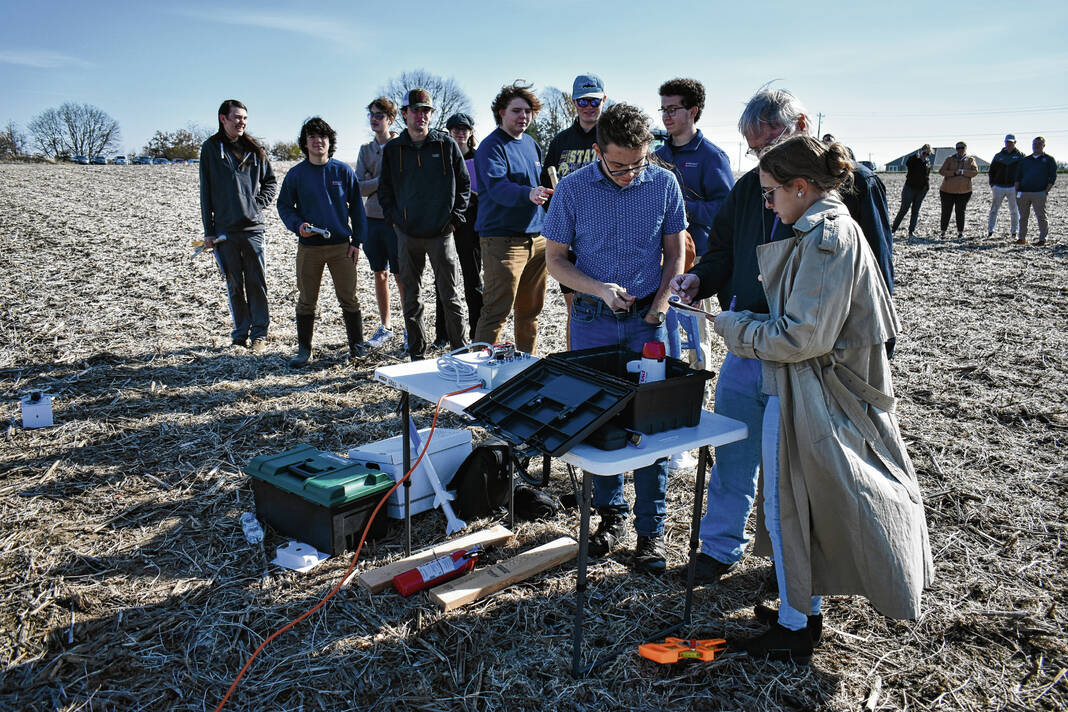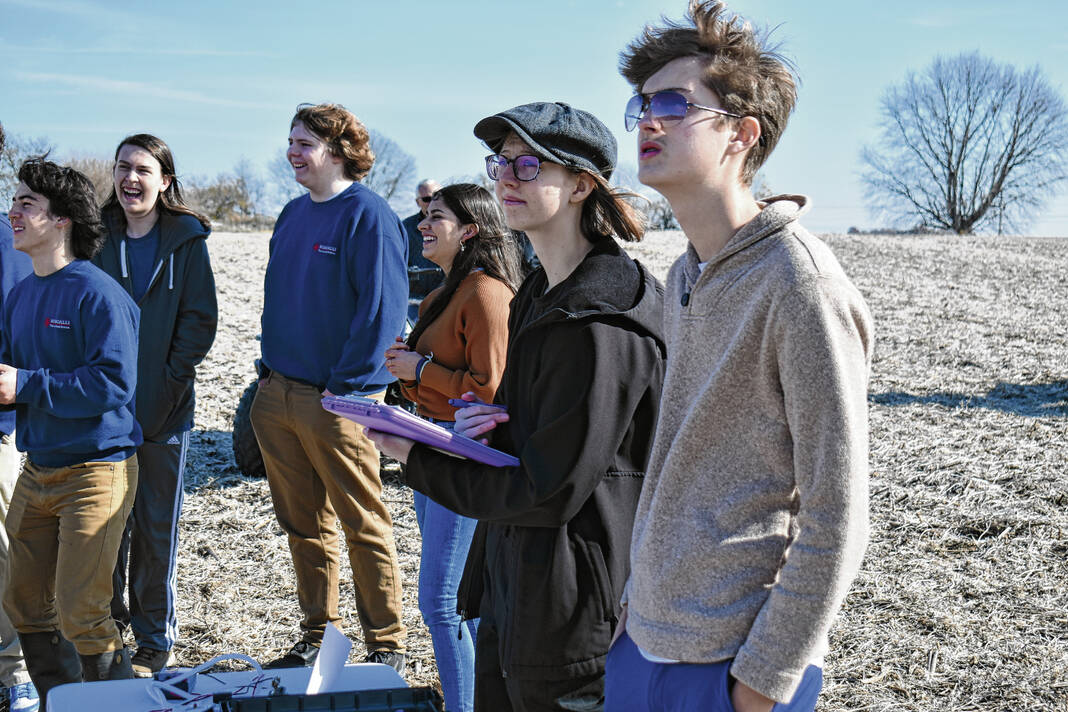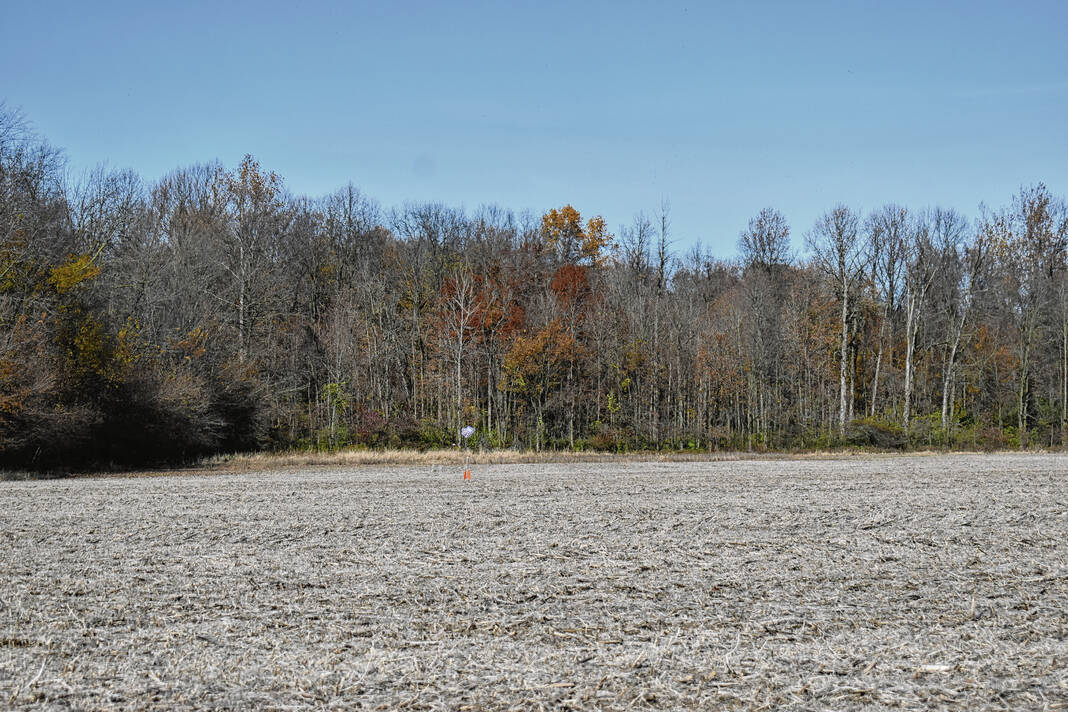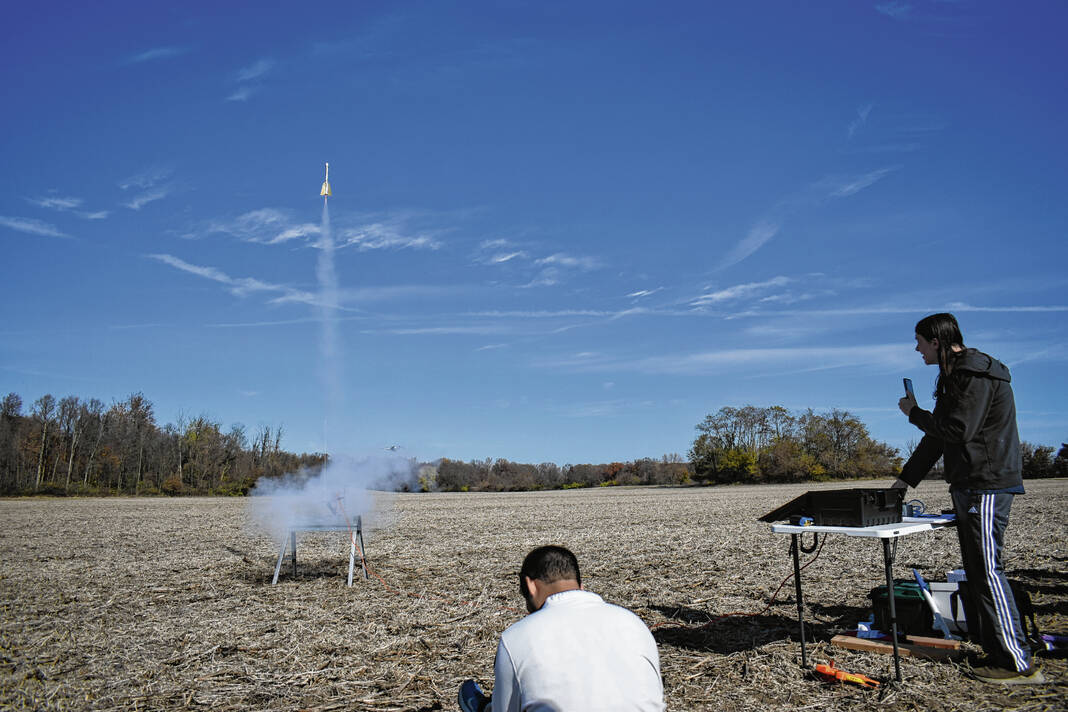
Aeronautical Center of Technology students launch a rocket on Thursday in Greenwood. Noah Crenshaw | Daily Journal
With the press of a button, weeks of hard work flew high into the sky.
The first rocket soared up to nearly 200 feet in the sky in a matter of seconds, with a trail of smoke behind it. Once it reached its maximum altitude, a parachute deployed and it floated down to the farm field in rural Greenwood below Thursday afternoon.
Then a pair of students ran to pick up the rocket as another team set up for the next launch.
Over the course of 45 minutes, five teams of students from the Aeronautical Center of Technology at Indy South Greenwood Airport got to utilize knowledge from weeks of class work launch to model rockets. The launches are part of the Rockets 101 course taught by Greg Hill, an instructor at the aeronautical center.
For the course, students first started learning about the four forces that act on a rocket, which are similar to those that act on an airplane — lift, gravity, thrust and drag. They also learned about Newton’s laws, Hill said.
Later, they were given some PVC tubing and plastic and told that they had the freedom to design their rocket any way they wanted. They then went into a workshop to cut and design their rockets, and learn how to keep their rockets’ fins on and how to secure the engines, Hill said.
“As we progressed, they also learned about the components of a model rocket engine,” he said. “There’s a propellant, which makes it go up, and then there’s a delay charge and then there’s an ejection charge, which is supposed to push out the parachutes when it comes back down properly.”
Ahead of Thursday’s launches, students also learned how launch systems work, and how to launch rockets safely. The rockets the students made used a mechanical launch system, which had propellant ignited via an electrical battery after a button press, Hill said.
Thursday’s weather was nearly perfect for rocket launches, although there was a little bit too much wind, Hill said. Most students’ rockets launched without a hitch, although one team’s rocket didn’t have its propellant ignite at the proper time.
Still, this was a learning opportunity.
“Something, obviously, didn’t go quite according to plan with that, but like I told him in the beginning, sometimes you learn more from your failures than you do your successes,” Hill said. “So you design for success, and if things don’t work the way you want, then you figure out what went wrong and then we go back and redesign.”
Eighteen-year-olds Jed Allender, a home-schooled student, and Lily Lewen, a Roncalli High School student, were the first up on Thursday, launching their rocket dubbed Jed Force 1. Allender has been interested in aviation since he was a little kid, enjoying watching airplanes.
“I always wanted to be an airline transport pilot,” Allender said. “So after having heard of this program, multiple different people were like, ‘This sounds like a great opportunity.’ So we were able to get connected to the program and I’m really happy that I’m here.”
Allender didn’t know there was a rocketry course at first, he said. He has enjoyed other parts of the curriculum at the aeronautical center, including building an airplane, meteorology and all the work that goes into becoming a pilot, he said.
“It’s a lot more than you necessarily think though, but it’s very rewarding,” Allender said.
Like Allender, Greenwood High School student Melanie Rodriguez has been interested in studying aviation for some time and didn’t realize she would be launching rockets as part of the program. The 17-year-old was partnered with Roncalli student Preston Matthews to launch Jed Force 2, their rocket that they named after Allender’s rocket — sparking a trend of Jed Forces for the rest of the day.
For Rodriguez, the entire process was fun although she says there were a few mistakes and challenges her team made.
“Our fin came off like a week ago, before launching, so we had to put that back together really fast,” she said.
Seventeen-year-old Sean Stahl learned about the class and the aeronautical center while at Roncalli. He thought it would be a great way to get more engaged with flying and aviation, while also getting dual credit, he said.
“I’m half-Japanese. My mom’s full Japanese and dad was stationed in Japan; my mom, dad met over there,” Stahl said. “Every year I’d cross the Pacific, flying (in) big commercial jets; doing that every year, growing up as a kid, seeing the large jets, just got me engaged in flying.”
Stahl, Allender and Rodriguez all encouraged students interested in taking part in the program to do so. Even though times can be hard if someone really wants to do it, they need to “buckle down” and start looking ahead, Allender said.
“Just get in the mindset of, ‘I want to do this’ and use everything every opportunity you possibly have to do that,” he said.
Stahl echoed a similar sentiment, saying even those who are only slightly thinking about getting into aviation should try out any opportunity they get to learn and experience more, he said.
Rodriguez encourages those interested to find a place and try to get in. She felt it was harder for girls like herself to get into programs like this, she said.
“If you can see the ratio, like three girls and the rest are boys, so I would definitely tell the girls to not be afraid and just go for it and look if you’re really interested,” Rodriguez said.
Next semester, students will launch rockets again but through a computer-controlled launch system. As the name implies, students will learn how to use computer software to launch rockets.
“So we will start our software program and we’ll stand back,” he said. “They don’t have to push buttons and the computer will take over — kind of like what NASA does.”
To learn more about the class, Hill says interested parties can reach out to the Aviation Center for Technology by going online to aerotechcenter.org.





